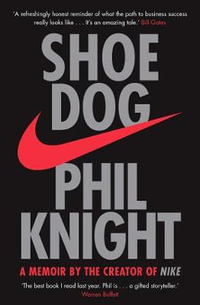
Modernizing China's Industries : Lessons from Wool and Wool Textiles
By: Colin G. Brown, Scott A. Waldron, John W. Longworth
Hardcover | 1 January 2005
Sorry, we are not able to source the book you are looking for right now.
We did a search for other books with a similar title, however there were no matches. You can try selecting from a similar category, click on the author's name, or use the search box above to find your book.
Industry Reviews
'As the authors admit, "the wool industry may seem a rather obscure choice" (p. 23). Yet this is a book of interest to a much wider relationship than agro-business specialists. It provides a meticulous case-study of one industry which illuminates a number of broader issues currently under discussion in the China studies field. . . As the Chinese economy becomes more variegated, economists and political scientists trying to understand the Chinese economic reform experience will increasingly have to rely on such studies. They bring out the intricacies of this process and help us to move from across-the-board generalizations on property rights reform to more nuanced analyses of economic transition.' -- Bjorn Alpermann, The China Journal
'China defies generalizations, and the only way that we can hope to obtain a clear idea of the process of reform is through detailed studies, that trace the complex ebb and flow of reforms, including the interactions between centre and locality, and between the stages of the processing. This is a valuable study that will stand the test of time.' -- Will Martin, The World Bank, US
'This book is more than "yet another industry report". This is a book on transition. It describes the mega-forces - privatization; state-owned enterprise reform; internationalization; increasing competition - and their mega-consequences - the proliferation of small, private traders; the diversification of the process sector; the disintegration of government agencies and private initiatives that had been in charge of coordinating and managing quality - that not only affected the wool sector, but are literally re-defining the fabric of China's economy. For those interested in trying to better understand the fastest growing economy in the world, this is a must read. Neither the authors' competence in wool technology nor their description of the institutional details of the wool economy gets in the way of their main message. Powerful economic forces are at work in China. In some cases there are positive benefits - through competitive and improved incentives. In other cases, however, there is a cost in terms of rising transaction costs, imperfect information and the inability to rationalize the evolving supply chains.' -- Scott Rozelle, University of California, US
ISBN: 9781843765912
ISBN-10: 1843765918
Published: 1st January 2005
Format: Hardcover
Language: English
Number of Pages: 256
Audience: College, Tertiary and University
Publisher: Edward Elgar Publishing Ltd
Country of Publication: GB
Dimensions (cm): 23.4 x 15.6 x 2.54
Weight (kg): 0.54
Shipping
| Standard Shipping | Express Shipping | |
|---|---|---|
| Metro postcodes: | $9.99 | $14.95 |
| Regional postcodes: | $9.99 | $14.95 |
| Rural postcodes: | $9.99 | $14.95 |
How to return your order
At Booktopia, we offer hassle-free returns in accordance with our returns policy. If you wish to return an item, please get in touch with Booktopia Customer Care.
Additional postage charges may be applicable.
Defective items
If there is a problem with any of the items received for your order then the Booktopia Customer Care team is ready to assist you.
For more info please visit our Help Centre.
You Can Find This Book In
This product is categorised by
- Non-FictionEarth Sciences, Geography, Environment, PlanningGeographyHuman GeographyEconomic Geography
- Non-FictionHistoryRegional & National HistoryAsian History
- Non-FictionIndustry & Industrial StudiesManufacturing IndustriesTextile Industries
- Non-FictionReference, Information & Interdisciplinary SubjectsInterdisciplinary StudiesRegional Studies
- Non-FictionEconomicsDevelopment Economics & Emerging Economies























